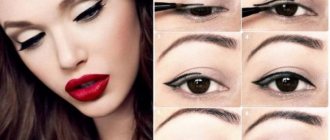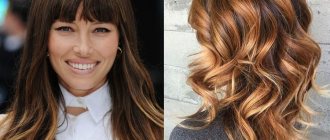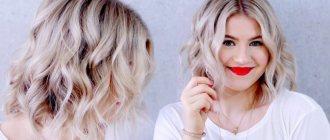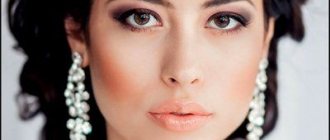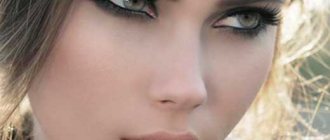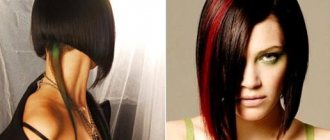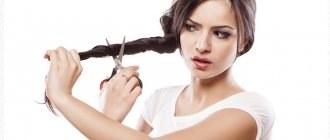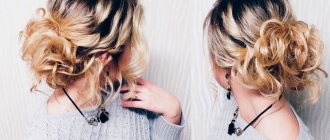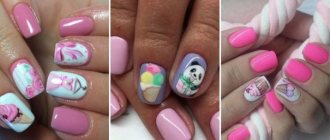What is this procedure? This technique arose relatively recently and is one of the types of highlighting, it is also called French highlighting. The purpose of this coloring is to give the ends of the hair a naturally faded look.
It is suitable for both brunettes and blondes, and is also suitable for those with light brown hair. As for the length, it will look better on medium or long hair.
In this case, the transition from natural color to lightened color will look more natural, and the transition border will be less noticeable. This coloring will visually add volume to the hair and enhance the depth of the natural shade. It will give freshness to your face and highlight the color of your eyes.
It is worth remembering that bleaching dries out your hair, so you will need to moisturize the bleached ends with oil and nourish with masks 1-2 times a week.
What it is?
A new fashionable coloring appeared thanks to the Italian hairdresser and stylist Aldo Coppola. The method got its name because of its resemblance to a very expensive and rare type of wool - shahtoosh.
The specificity of coloring really allows us to classify it as the most elite type of luxury class. Experts call this method “the kiss of the sun.”
Indeed, the ability to transform hair dyed this way is impressive. Thanks to the peculiarities of the process, strands are obtained with the effect of sun-bleached hair, which in fact is a type of highlighting with shading of color cascades.
Unlike conventional bleaching of strands, painting of shatush is carried out in an open way, without the use of foil and other devices. The result depends entirely on the skill of the stylist or your own abilities combined with a rich imagination.
For the best result, hair is dyed in small strands, always moving away from the root zone, leaving it almost untouched.
Borderline gradations are extinguished by backcombing, which is done before applying paint. Long hair dyed using this technique looks very beautiful and fresh.
Soft play of colors occurs with gradual transitions: from dark ones at the roots to lighter ones closer to the tips. They choose several color schemes at once, which they use simultaneously, combining, varying and applying in accordance with their style and mood.
Deepening the color with a smooth transition into radiant strands gives the hair vitality and volume. They look alive and natural, while maintaining their natural properties.
On light curls, the so-called reverse shatush looks great, with gradual lightening of darker, saturated strands towards the roots. In the root zone, the hair remains intact. This method is suitable for both girls and women.
Masters advise using shatush to dye dark hair. At least that's what this method was invented for. But even on light strands you can achieve a stunning effect. This method includes several coloring methods using the California highlighting technique, ombre and balayage.
Only unlike them, the hair looks more natural and natural.
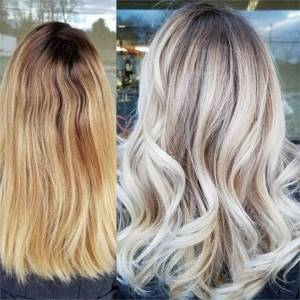
What is shatush?
Shatush is a complex hair coloring technique that creates the effect of sun-bleached strands. It can be called a more advanced variation of California highlighting. The result of coloring with shatush is more natural and natural, without a sharp color transition. The master pays maximum attention to the strands near the face. Lightening your curls allows you to refresh your appearance and even rejuvenate it a little.
Shatush can be performed on both straight and curly hair, but curled curls still look more beautiful with coloring. In this case, the hair will be visually more voluminous and textured.
You can dye both long strands and medium-length hair. Color stretching will not be possible on ultra-short hair. Coloring is possible both on layered graduated hairstyles and on strands of the same length.
This coloring technique is chosen by many Hollywood stars, such as Jessica Alba, Jennifer Aniston, Sandra Bullock. In the photo below you can see beautiful examples of dyed curls.
Execution technique
When dyeing, 2–3 shades are used, close to the natural color of the hair. The dye is gently stretched along the strands to achieve the softest color transition. The dye is applied to less than a third of all strands, the natural hair color remains the main one.
Foil is not used to dye strands, as in highlighting and coloring. The dye is applied to the strands after combing them. This allows you to achieve a more natural effect when lightening.
Coloring the shatush is performed as follows:
- the master separates a small strand about 2 centimeters thick;
- the rest of the hair is pinned up with clips so that it does not get in the way;
- the curl is combed with a thin comb;
- strands are processed in a similar manner in a chaotic manner throughout the head;
- then the paint is applied to the curls that were not included in the backcomb;
- the composition is left to act on the curls for 30 - 35 minutes and washed off.
Advantages and disadvantages
The shatush technique has a number of advantages:
- after dyeing, the hair looks voluminous and lush;
- Shatush, unlike other dyeing methods, is considered a very gentle technique for hair, since about a third of all strands are lightened;
- the effect is very natural;
- non-drastic image changes;
- The technique is suitable for any hair color, but on dark strands the coloring looks more impressive due to the contrast of shades;
- the result remains neat for 4 months;
- the roots are not dyed, so as the hair grows back there are no sudden color transitions and there is no need to repeat the procedure every month.
But the technology also has disadvantages:
- Only a professional colorist can do a beautiful job; coloring is not done at home;
- in comparison with plain coloring and highlighting, the cost of the procedure is high;
- the procedure is not performed on severely damaged split hair;
- after dyeing, the ends of the hair may become drier;
- to maintain the beauty of the shade, you will have to tint your curls in the salon or at home every one and a half to two months;
- After dyeing, to maintain the beauty of the shade, you need to choose products for caring for bleached hair.
Advantages and disadvantages
When performing the complex specifics of coloring using the shatush technique, the following positive properties exist:
- painting in the shatush style quickly changes the image;
- staining occurs easily and quickly (if you have the necessary appropriate skills);
- the result lasts a long time, and re-painting will be needed only after a few months, which is very economical;
- the technique is considered the most gentle and soft, preserves hair roots and is suitable for coloring curly, unruly curls;
- a hairstyle made from dyed hair looks good both loose and gathered;
- hair looks flawless, seems more voluminous, thick and shiny;
- the strands successfully hide growing gray hair, the boundaries of your own and dyed hair are lost in the play of colors, ensuring natural hair growth;
- colored curls in any lighting look advantageous, as if small lanterns are illuminated from within;
- with correctly selected color accents, you don’t have to use curling irons or curling irons for styling at all;
- Shatush is designed to emphasize advantages and hide flaws, softly illuminating the contours of a woman’s face, presenting it in the most favorable light.
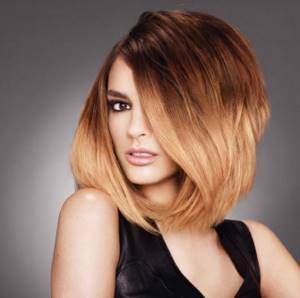
The undeniable advantages of this coloring technique certainly compare favorably with expensive procedures in beauty salons. But this is perhaps the only drawback of the technology. And it cannot be used if gray hair makes up one third of the total hair volume.
The procedure requires special skills. If there are none, then the result of staining may be quite unexpected.
To maintain color lines, shading and color coordinates, including saturation, it is necessary to adjust the hairstyle format approximately every four months.
Who is most suitable for coloring?
Shatush should be chosen by brunettes or girls with light brown hair. The painting will look natural. In this case, there should not be a short hairstyle. At least 2-3 lengths. Otherwise, the effect simply will not be noticeable. This is one of the surest ways to hide beginning gray hair.
Balayage. Suitable for girls who want to refresh their image, but without resorting to radical methods. Ideal for blondes and fair-haired women. And with dark hair, the effect will be too bright, it will be impossible not to notice the change.
Ombre. Ideal on short hair. Suitable for extreme girls. It is this type of coloring that teenagers stop at. This season it is fashionable to choose bright colors (blue, crimson, yellow, purple). But remember, the clothing style must match the hairstyle. This coloring looks ridiculous in combination with an evening dress or a formal suit.
The complexity of the procedure. Shatush - you can’t do it at home. Firstly, having studied the condition of the hair, the master must choose the width of the curls. Secondly, choose the right shade so that the paint looks as natural as possible.
Many people do ombre and balayage on their own, without resorting to the services of specialists. This is justified in the case when the color will not be “stretched” along the entire length of the hair.
In terms of time, all presented types of staining take up to 3 hours. Keep this in mind when going to a beauty salon.
As you can see, the coloring techniques are completely different. Only you can decide which one you prefer.
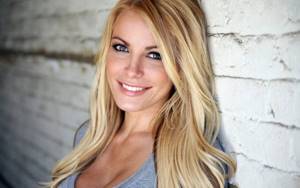
Differences from other coloring techniques
The technique differs from classic highlighting in its color stretching system: the root zone is noticeably different from the rest of the hair color, and smooth transitions give the curls a 3D effect. As a result, the hairstyle looks very elegant and noble. In general, the shatush technique is similar to trendy ombre and balayage, based on color extraction.
- Ombre consists of completely dyeing highlighted strands of hair, with virtually no transition, while with shatush, individual strands from the same ends are dyed, but at random. The gradient in this case is different. Shatush is easy to distinguish from ombre.
- Complex soft dyeing is used in the balayage : all hair is dyed completely, and the transition effect is ensured by the peculiarity of applying the dye. The vaguer and more imperceptible the gradient, the more professional the master’s work.
Meaning of terms
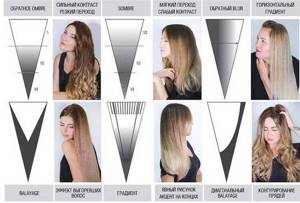
Ombre (from the French “shadow”, the second name is degrade) is a two-tone coloring with a blurred horizontal border. Colors are used bright or natural. At the client's request, part of the head remains untouched, the other half is painted. The result is two tones of strands: light top / dark bottom or vice versa.
Balayage (from the French “balayage”) is a technique when the artist applies a new color to the strands and “sweeps it out” with light movements. The paint is applied close to the roots. Balayage hair coloring creates the effect of a sun-bleached head.
- Tablets to boost immunity for adults - list
- Diet for pain in the intestines
- White bread croutons: breakfast recipes
Who is suitable for Shatush coloring?
Shatush is a universal coloring technique that is suitable for almost every woman. For young girls, coloring will add zest and emphasize natural beauty, while for older women it will add charm and elegance.
Coloring looks good on long hair and shoulder-length haircuts such as bobs or bobs.
The natural hair color using the shatush technique does not matter. For each shade there is a suitable palette of colors that matches perfectly with the natural hair color.

However, blondes with too light a hair shade are advised to choose a different coloring method, since with this color the result of shatush may be invisible.
Shatush coloring technique
The shatush hair coloring technique involves stretching the color over small strands in a varied order with a minimum distance from the roots of 5 cm. A smooth transition from dark to light color can be achieved in 2 ways:
- with backcombed strands;
- without backcombing.
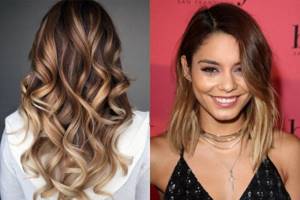
Tubbing or combing strands allows you to achieve natural color stretching as quickly and easily as possible. With this method of painting, the technique for making the shatush will be as follows:
- Divide the hair into strands with a diameter of no more than 2 cm. Since dyeing always begins from the back of the head, excess strands should be secured with clips so as not to interfere with the work.
- Comb the strands at the roots.
- Apply the coloring composition to the strand with short, intense strokes. It is important not to saturate all the hair, but to dye it superficially to achieve a burnout effect.
- Repeat the procedure with the remaining strands one by one.
- Leave the coloring mixture on your hair for 10 to 40 minutes and then wash it off.
The second method of dyeing hair in the shatush style is performed without combing and requires professionalism from the master. The coloring scheme is practically no different from that described above, with the exception that a smooth stretching of the color is carried out without backcombing, but with the help of light strokes at the junction of the shades. A gradual increase in their intensity allows for the smoothest possible transition.
If the procedure is performed correctly, the result will be amazing. The hair will acquire a natural shimmer, while the difference between natural and dyed strands will be hidden. Correctly selected shades will create the effect of burnt hair.
This is what professional hair coloring using the shatush technique looks like in the photo.

Stylish haircuts for long hair will help emphasize the advantages of the shatush technique.
Factors influencing the choice of technique: length, structure, hair density
Despite the versatility of the technique, the quality of coloring depends on several factors.
Hair length is one of them:
- Shatush looks most impressive on long hair, because on them the beauty of coloring is fully demonstrated. Even when creating collected hairstyles, the coloring does not lose its originality. A variety of braids and weaves will only emphasize the peculiarity of coloring.
- Short haircuts such as pixie and garcon are not suitable for shatush. The hair length will not be enough to properly distribute the pigment and achieve the desired effect.
- Shatush can be done for any hair thickness. For hair that is too thin, dyeing will give it fullness and volume, and will dilute the natural thickness with the effect of burnt hair.
- Shatush looks good on straight or wavy hair. Straight and curled hair will demonstrate coloring especially well, but small curls are not suitable for French highlighting. Against the background of their structure, the transition of shades will not be noticeable.
Choosing a shade for brown hair
Coloring shatush, the photo of which is presented below, looks very organic on light brown hair. Using different shades of tinting, the effect of natural burning of strands in the sun is created.
Shatush can be done on any shade of light brown hair. Only very light blondes are not suitable for this technique. Hair dye should not differ too much from the natural color. Lightening by 1-2 tones is enough.
The following shades are suitable for tinting lightened strands:
- ashen;
- golden;
- walnut;
- wheat;
- beige;
- rye.
It is important to note that the curls that frame the face should be lighter than the bulk of the hair.
Choosing a shade for dark and black hair
Dyeing shatush (you can see the photo below) on dark and black hair allows you to use absolutely any shades, both natural and bright colors, to tint strands.
The peculiarity of shatush for dark hair is that for lightening it is necessary to use an oxidizing agent of a higher percentage, which depends on the thickness of the hair and the natural color of the hair. For fine hair, an oxide of 3% is enough, and dyed black hair will need an oxidizing agent of 6-9% or a special lightening powder.
Shatush looks most natural on undyed hair. Black pigment does not always combine well with natural shades, so many hairdressers pre-wash the black color with several tones.

Shatush for dark hair is a favorite among women over 40 years old. It visually rejuvenates the face and makes the image more chic and attractive.
Choosing a shade for blond hair
Dyeing shatush (photo below) on light shades of blonde differs in that hair tinting is an optional stage of the procedure. Lightened strands on such hair look natural without additional manipulation.
Before applying the coloring composition, you must make sure that the selected shade has a difference of at least 2 tones from the natural hair color. Otherwise, due to the lack of color transition, the meaning of coloring is lost.
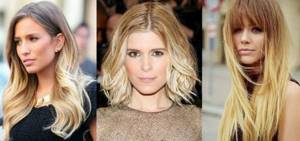
The best shades for a light shatush would be:
- ashen;
- light wheat;
- pearl;
- white.
A tan especially emphasizes the beauty of the shatush, and pallor in combination with bleached hair, on the contrary, creates a sickly appearance and gives the skin an earthy tint.
Choosing a shade for red hair
Coloring shatush (photo can be seen below) on red hair is performed extremely rarely. There are not many shades that look harmonious with natural red hair. The reason for this is the inability of red hair to fade in the sun.
Shades that go with red hair color:
- caramel;
- red;
- golden;
- honey;
- copper.
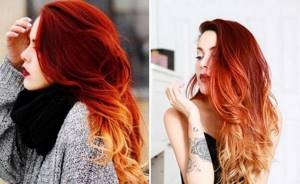
The color of the strands is selected according to the client’s color type. The choice of cold or warm shades depends on the natural color of your hair and skin. Red and copper tones are suitable for dark-skinned girls, and honey and caramel tones for pale girls.
Shatush for long and short hair: differences in coloring
The technology for coloring shatush for long and short hair is no different, but has some features:
- On short hair, you need to distribute the pigment more carefully to create a smooth transition from dark to light shade.
- Due to the small distance between the roots and ends, the coloring can look brighter than on long hair.
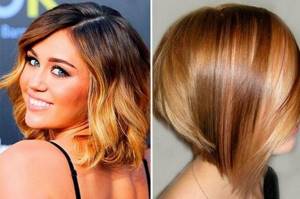
You should not do shatush on short hair yourself. To do this, you need to know which strands to choose for applying the lightener so that the resulting French highlighting looks harmonious.
The length of short hair that covers the neck is optimal for coloring.
There are many haircuts that suit the length, but shatush looks best with:
- bob;
- long bob;
- asymmetrical haircut;
- styling in waves;
- straight hair with careless styling.
Long hair will allow you to perform shatush without much difficulty, so beginners are advised to master the technique at this length.
Dyeing hair of different lengths
Shatush can be made to any length, because, in essence, it is simply lightening individual strands. We invite you to take a look at what happens!
Shatush for short hair
Bob, pixie, gavroche and any other short haircuts benefit from this coloring. The fact is that a smooth color transition always gives the hairstyle visual lightness and volume. This especially helps girls with smooth and straight hair.
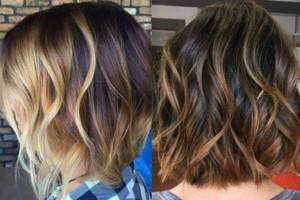
Shatush for medium hair
Shatush with cascading haircuts is the most harmonious combination of summer. It is also very good for straight hair, but here the skill of the stylist is much more important. On smooth hair, all transition flaws are more visible.

Shatush for long hair
Long hair is often a pity and scary to dye - in case it gets ruined. With such careful technology, this is definitely excluded, so you can easily change your image!
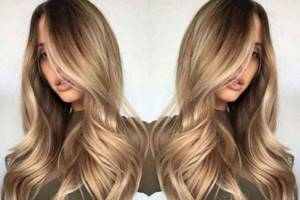
Hair coloring Airtach: what is it, technique (60 photos)
Price in Moscow and regions
The price for coloring shatush varies depending on the length, structure and density of the curls. Coloring bobs and lengths below the shoulder blades requires different amounts of dye, tonic and labor costs. The cost of coloring in Moscow and the regions also differs.
The table shows prices (in rubles) for painting shatush in different regions.
| Region name | Short hair | Average length | Long curls |
| Moscow | 1500-7400 | 2000-8000 | 3000-8200 |
| Moscow region | 1000-1500 | 2000-3000 | 4500-5500 |
| Central Federal District | 1000-1500 | 1500-2500 | 3000-4000 |
| Southern Federal District | 700-1400 | 1400-2000 | 3000-4000 |
| Siberian Federal District | 1700-2300 | 2500-4500 | 4800-6000 |
Coloring in the salon
An experienced master must approach each coloring using the shatush technique individually. Depending on the shade of the client’s strands, the required lightener and tinting dye are selected.
The stylist pays great attention to the “base” color of the client’s hair and, if necessary, dyes the roots in a darker color to obtain the necessary contrast.
It requires not only a special technique for applying hair dye, but also a method for shading it.
Stages
First, the master divides the hair into individual strands about two centimeters wide. Then, depending on the method he uses, he either pre-combs or applies a toning mixture to straight hair.
If necessary, a slightly darker dye of a natural color is applied to the hair roots: coffee, chocolate, nut.
Lighter shades of paint (honey, beige, golden) are applied to individual strands using slightly careless and chaotic movements.
Then the hair is washed and tinted with the main shade.
Duration
To perform French highlights in a salon, it takes from one to three hours, depending on the length of the hair and the complexity of the toning.
Price
The cost of the service depends on how long your hair is and what level of beauty salon you choose. So, coloring short hair can cost about 3,000-4,000 rubles. For French highlighting of long and thick hair you can pay up to 14,000 rubles.
Preparing for coloring
It is better to take care of your hair health in advance. Two weeks before highlighting, use restorative masks, shampoos and balms with keratin. If you have not used the drug used for coloring before, do an allergy test. How to do this is indicated in the instructions for the paint.
Hair protected by natural lubrication is less damaged, and the oxidizing agent penetrates its structure more easily. That is why it is recommended not to wash your hair a couple of days before coloring, and also to refuse to use foams and varnishes.
Required tools:
- Comb for backcombing, with fine teeth;
- Gloves to protect hands;
- Brush 3 cm wide;
- Cup for mixing the composition;
- Fixing clips.
For coloring using the “shatush” technique, lightening powder or paint with ammonia is suitable.
Highlighting using the shatush technique. Step-by-step instruction
Shatush can be made at home using the backcomb technique; this is the simplest technique with which you can achieve the desired effect.
- 1. Prepare the brightening composition by thoroughly mixing the paint components in a container;
- 2. Using partings, we divide the hair into conditional zones: temporal, occipital and parietal. For convenience, we secure the strands with clips;
- 3. From each zone, starting from the forehead, select strands no more than 2 cm wide and comb them, retreating 5-10 centimeters from the roots;
- 4. Apply the product to areas with backcombing, first with chaotic strokes, and then blend well with a brush;
- 5. The degree of staining can be determined visually. Please note that strands near the face lighten faster. Do not forget that the exposure time should not exceed 40 minutes.
- 6. If you used powder to lighten, then you can start tinting the strands with ammonia-free paint; read the exposure time on the label.
- 7. Wash off the paint with warm water and apply a balm or mask.
RULES FOR HAIR CARE AFTER DYEING
After bleaching, we recommend using a special shampoo for blond hair with purple pigments twice a week. This shampoo neutralizes yellowness and allows bleached hair to remain beautiful for as long as possible.
In addition, bleached hair requires regular care with balms and nourishing masks. Be sure to apply conditioning products to the ends of your hair after each wash.
Colored shatush
Colored shatush suits brave young girls. But it should only be done by a professional hairdresser to get the desired result. Let's look at what shades you can choose.
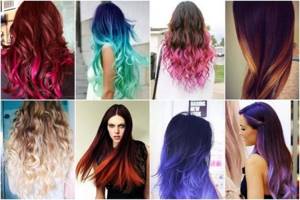
Violet
This shade is more suitable for dark-haired beauties and adds originality to the image without extremely bold, extravagant accents.
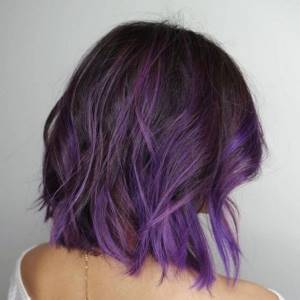
Bordeaux
It looks gorgeous, a woman’s hairstyle with a burgundy shatush looks like a million dollars.

Pink shatush
Used when coloring fair-haired girls. But you need to be careful with this shade: pink gives the image an infantile look.
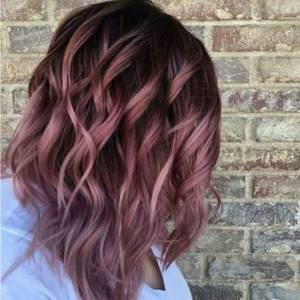
Red
Confident ladies who like to attract public attention can experiment with red.
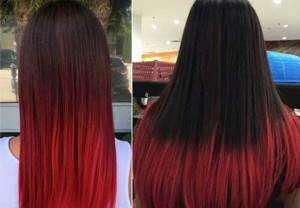
Who is suitable for coloring shatush
The shatush dyeing technique is considered universal and is suitable for any hair type and shade.
Some restrictions are imposed by the length of the strands. For a characteristic color stretch, the curls need to be long, so it is difficult to achieve the same result with short haircuts.
Red hair must be tinted before using the technique to get a more natural result.
Shatush is suitable for brunettes. In this case, the hairdresser chooses from a wide range of colors for coloring. Lighter shades soften the features of women with naturally dark hair and make them look younger.
Owners of light brown hair can count on a shade brighter than their natural color and additional shine.
To use shatush on light strands, a more limited number of colors is used - no more than two. In addition, blondes are recommended to slightly darken their natural hair color so that the stretch of tone stands out more beautifully.
Most suitable hairstyles
Let's consider which hairstyle the shatush is most suitable for.
To the cascade
Long hair cut in a cascade can be dyed using this technique. Shatush will make your hair more original and your hair thicker.

For an elongated square
If we are talking about a haircut below the shoulder blades, then shatush is an ideal coloring option that will make the hairstyle more textured and voluminous.
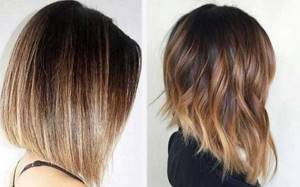
For hair with bangs
The bangs are painted in this case, if its length allows it. Short bangs are usually left untouched.
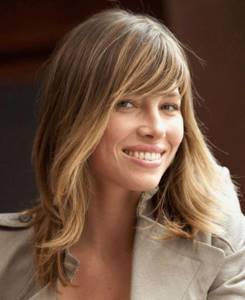
On the square
This procedure will help make an ordinary bob more original. It will make the image brighter, especially for those with dark and light brown hair.

Bob bob
This haircut is short enough for shatush, but nevertheless, this technique can be tried. Only for bobs you should choose not too contrasting shades; lightening up to 2 tones is enough.
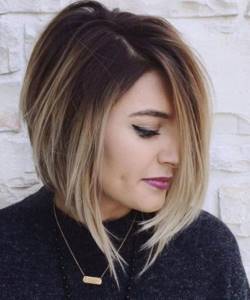
Color transition when dyeing using ombre and balayage methods
Although these techniques are very similar, there are significant differences between them. If we are talking about curly hair, then ombre is better suited for such hair. After all, the border of the color transition will not be as noticeable as on straight lines. This is the difference between balayage and ombre. It all depends on the wishes of the client. If he is not confused by the clear boundary of the color transition, then he can also dye his hair in ombre. For a more natural shade, preference should be given to the balayage technique.
This is interesting: Rating of base coats for shellac
FAQ
Shatush, balayage and ombre: what's the difference?
These techniques are similar to each other, but there are still differences. Ombre involves complete coloring of the ends, but with shatush, the strands are not completely colored, but in a chaotic manner. Balayage is a game of contrasts.
The color of the lower part of the hair is radically different from the upper part - there is no smooth transition characteristic of shatush.
How does shatush differ from highlighting?
Classic highlighting is the complete coloring of individual strands along the entire length. Shatush involves randomly dyeing the curls, creating the effect of sun-bleached hair.
Shatush and armoring: what is the difference?
When bronzing, the curls are painted in several shades, creating the effect of a smooth transition. In this case, the entire length of the hair is dyed, unlike shatush.
Shatush is a great way to revive monochromatic hair, giving it more volume and naturalness. This is one of the safest procedures that does not require monthly trips to the beauty salon, since over time the regrown roots are not visible.
Who is it suitable for?
This type of coloring refers to complex coloring in which two colors are present. Who is Shatush suitable for?
- For those who do not have the opportunity or desire to frequently make color correction, as, for example, with classic highlighting.
- Who likes the effect of naturally sun-bleached hair and bright accents at its ends.
- The color stretch is suitable for medium to long hair.
When performing Shatush on haircuts with short bangs, they are left undyed, since the application of the dye begins at a distance of 7–10 centimeters from the roots.
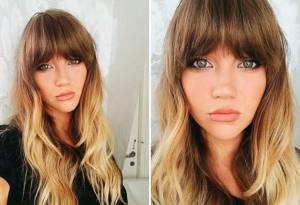
Since with the help of Shatush color stretching is done not only between natural shades, therefore, before deciding on this procedure, you need to choose the tone into which the transition will be made.
If you have hair extensions, then Shatush is not recommended. Because the factory dye on donor strands is more durable than the natural or cosmetic pigment on your own hair. The extensions will be colored differently, so the color after the procedure will be uneven. In order for the coloring effect to be good, you must first do Shatush on your hair, and then select donor strands for extensions to match the resulting colors.
Is it possible to do Shatush for pregnant women? It is impossible to answer this question unambiguously. During periods of hormonal instability, the reaction of the dye with the hair may be more or less intense than usual. Therefore, no hairdresser will guarantee the result of obtaining the desired shade. And also any dye has a specific smell, which can cause an acute attack of toxicosis in a pregnant woman.
A selection of photos before and after dyeing shatush for dark short, medium, long hair
Next, we suggest looking at examples of spectacular shatush on dark hair of different lengths in a selection of photos before and after coloring.
